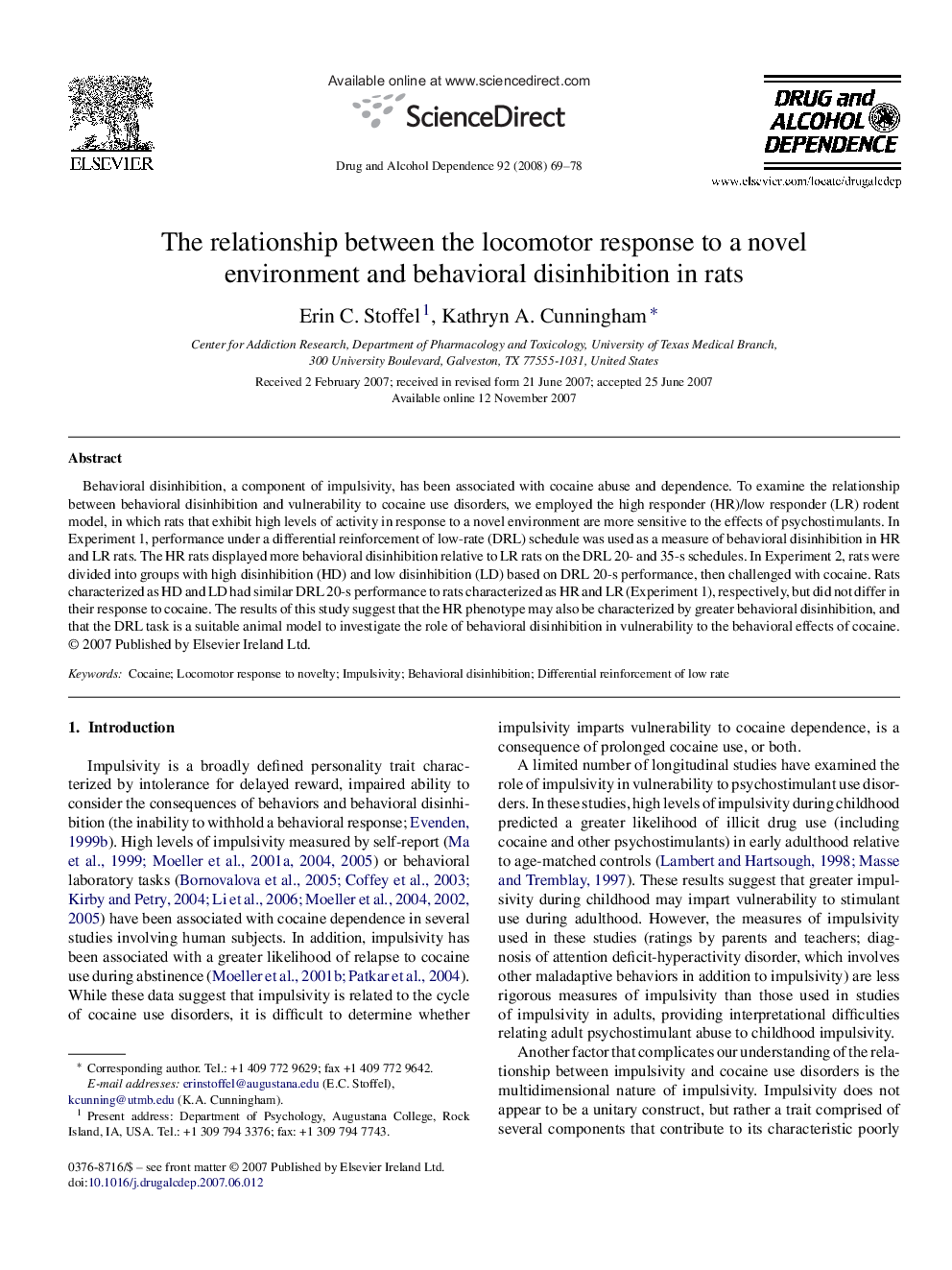| Article ID | Journal | Published Year | Pages | File Type |
|---|---|---|---|---|
| 1071649 | Drug and Alcohol Dependence | 2008 | 10 Pages |
Behavioral disinhibition, a component of impulsivity, has been associated with cocaine abuse and dependence. To examine the relationship between behavioral disinhibition and vulnerability to cocaine use disorders, we employed the high responder (HR)/low responder (LR) rodent model, in which rats that exhibit high levels of activity in response to a novel environment are more sensitive to the effects of psychostimulants. In Experiment 1, performance under a differential reinforcement of low-rate (DRL) schedule was used as a measure of behavioral disinhibition in HR and LR rats. The HR rats displayed more behavioral disinhibition relative to LR rats on the DRL 20- and 35-s schedules. In Experiment 2, rats were divided into groups with high disinhibition (HD) and low disinhibition (LD) based on DRL 20-s performance, then challenged with cocaine. Rats characterized as HD and LD had similar DRL 20-s performance to rats characterized as HR and LR (Experiment 1), respectively, but did not differ in their response to cocaine. The results of this study suggest that the HR phenotype may also be characterized by greater behavioral disinhibition, and that the DRL task is a suitable animal model to investigate the role of behavioral disinhibition in vulnerability to the behavioral effects of cocaine.
